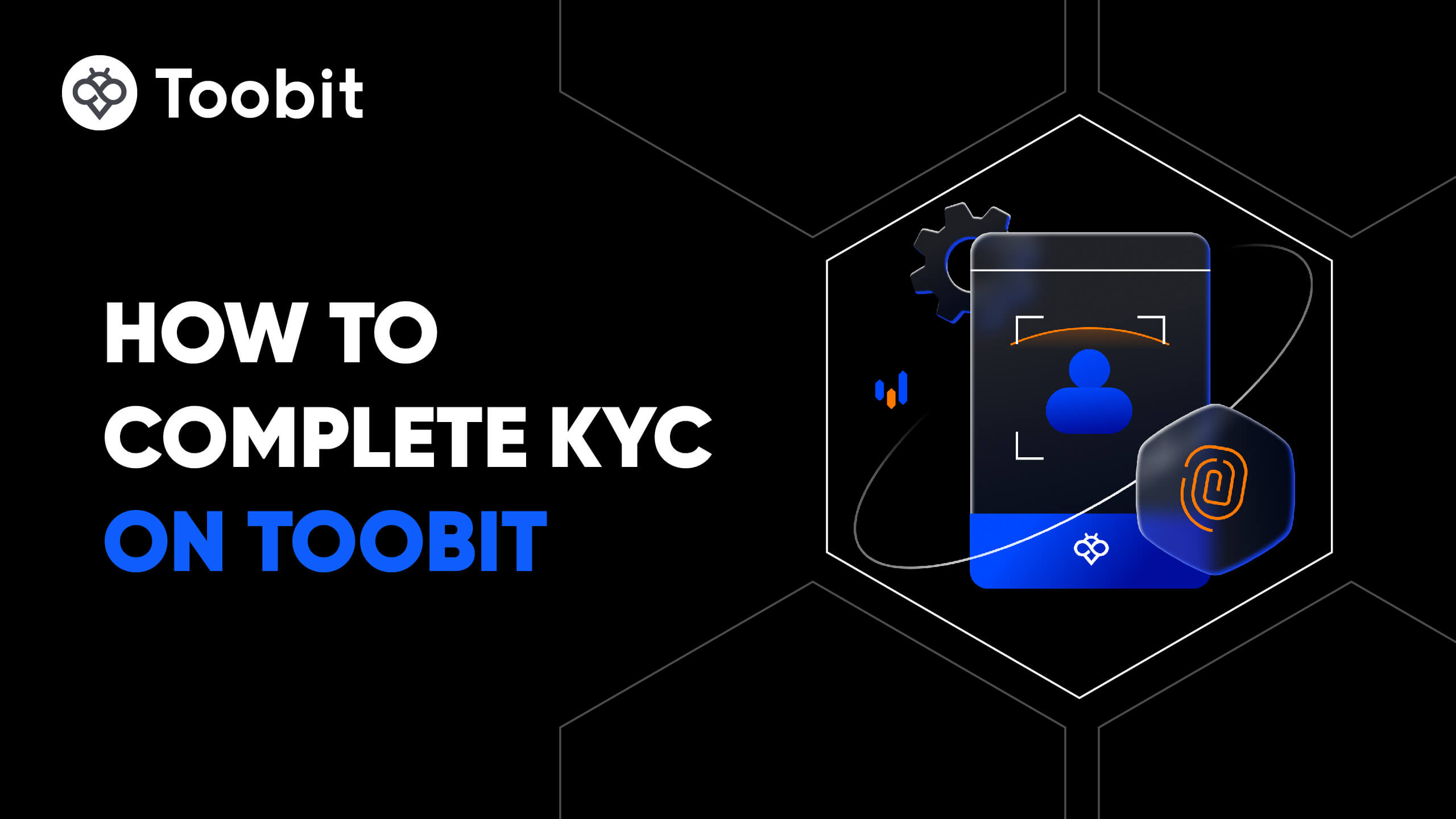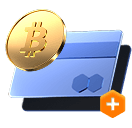Precio de NEAR Protocol
NEARInformación del mercado de NEAR Protocol
Precio en tiempo real de NEAR Protocol hoy en USD
¿Cuánto vale 1 NEAR en ?
Sobre NEAR Protocol(NEAR)
Historial de precios de NEAR Protocol
¿Por qué el precio de NEAR Protocol fluctúa constantemente?
¿Qué factores afectan el rendimiento de los precios de NEAR Protocol?
Precios globales de NEAR Protocol
Cómo comprar NEAR Protocol
¡Únete a Toobit ahora!
Regístrate en Toobit con tu dirección de correo electrónico/número de teléfono móvil y país de residencia, y crea una contraseña segura para proteger tu cuenta.
Verifica tu identidad
Completa la verificación de identidad proporcionando tus datos personales y una identificación con foto válida.
Agrega un método de pago y compra NEAR Protocol (NEAR)
Agrega una tarjeta de crédito/débito o una cuenta bancaria después de verificar tu cuenta de Toobit. Utiliza múltiples opciones de pago para comprar NEAR Protocol en Toobit.
Opera futuros perpetuos de NEAR
Después de registrarte en Toobit y comprar USDT o tokens NEAR, puedes comenzar a hacer trading de derivados, incluidos Futuros NEAR y trading con margen para aumentar tus ingresos.
Únete a Copiar de NEAR con traders líderes
Después de registrarte en Toobit y comprar con éxito USDT o tokens NEAR, también puedes comenzar el comercio de copias siguiendo a los Traders Líderes.
¿Dónde puedo comprar NEAR Protocol?
Compra criptomonedas en la app de Toobit
Regístrate en minutos para comprar criptomonedas con tarjeta de crédito o transferencia bancaria.
Opera en Toobit
Deposita tus criptomonedas en Toobit y disfruta de alta liquidez y bajas comisiones de trading.
Sección de video — verificación rápida, operaciones rápidas

Cómo completar la verificación en Toobit y protegerte contra el fraude
- 1.Inicia sesión en tu cuenta de Toobit.
- 2.Si eres nuevo en Toobit, mira nuestro tutorial sobre cómo crear una cuenta.
- 3.Haz clic en el ícono de perfil en la esquina superior derecha de la barra de navegación y luego pulsa en la página de Identificación.
Preguntas Frecuentes Sobre NEAR Protocol (NEAR)
¿Qué es NEAR Protocol (NEAR)?
NEAR es una plataforma de aplicaciones descentralizadas diseñada para habilitar la web abierta del futuro y potenciar su economía. Utiliza la misma tecnología subyacente que hizo de Bitcoin una moneda indestructible y la combina con avances de vanguardia en consenso comunitario, fragmentación de bases de datos y usabilidad. En esta web, se pueden crear desde nuevas monedas hasta nuevas aplicaciones e industrias, abriendo la puerta a un futuro completamente nuevo.¿Cómo comprar NEAR Protocol (NEAR)?
Puedes comprar NEAR Protocol con USDT aquí en Toobit. Lee nuestra guía sobre Cómo comprar criptomonedas en Toobit para más información.¿Para qué se utiliza el Protocolo NEAR (NEAR)?
El token NEAR se puede utilizar para pagar tarifas de transacción dentro del ecosistema del Protocolo NEAR y como recompensa para los validadores de transacciones. NEAR también se puede usar para almacenar datos en la Blockchain del Protocolo NEAR. Binance tiene información sobre el precio de NEAR.¿Cuál es el precio de NEAR ahora?
¿Estás buscando el precio de NEAR Protocol (NEAR)? El precio en vivo de NEAR se actualiza en tiempo real en Toobit.¿Dónde vender NEAR?
Puedes vender NEAR a USDT aquí en Toobit. Lee nuestra guía sobre Cómo Operar en el Mercado Spot en Toobit para más información.¿Cómo retirar NEAR en Toobit?
Puedes retirar NEAR a USDT aquí en Toobit. Lee nuestra guía sobre cómo retirar criptomonedas en Toobit para más información.¿Cuáles son las características clave de NEAR?
Cada uno de los problemas clave enfrentados por las plataformas actuales, sus desarrolladores y sus usuarios finales se abordan a continuación. Más información sobre la implementación específica de estas características se deja para las siguientes secciones de este documento. 1. Usabilidad Primero2. Escalabilidad Segundo3. Desarrollo y Evolución Eficientes 4. Descentralización Real5. Un Nuevo Modelo de Negocio para Desarrolladores y Emprendedores¿Cuáles son los Principios de Diseño de NEAR?
Tanto el diseño como el desarrollo de la plataforma NEAR están guiados por un conjunto de principios clave. Estos principios reflejan los problemas inherentes en los sistemas centralizados y descentralizados de hoy en día. 1. Usabilidad2. Escalabilidad3. Simplicidad4. Descentralización SostenibleCómo Funciona NEAR
NEAR es una infraestructura en la nube operada por una comunidad para el despliegue y operación de aplicaciones descentralizadas. Combina características de una base de datos descentralizada con las de una plataforma sin servidor. Esta plataforma está habilitada por un token que permite a las aplicaciones interactuar de una nueva manera. Estas características permiten a los desarrolladores crear back-ends resistentes a la censura para aplicaciones que manejan datos sensibles como dinero, identidad y activos, y componentes de estado abierto que interactúan sin problemas. Los "contratos inteligentes" son los componentes y back-ends de estas aplicaciones, aunque a menudo los llamaremos "aplicaciones". La infraestructura de esta nube está compuesta por un número infinito de nodos, que son operados por personas y organizaciones de todo el mundo. Ofrecen su espacio de disco duro y CPU, ya sea en sus laptops o, más probablemente, en servidores profesionales. Los desarrolladores escriben contratos inteligentes y luego los despliegan como si fuera a una sola nube. Esto es muy similar a la forma en que las aplicaciones se despliegan en nubes centralizadas existentes. La aplicación funcionará mientras haya al menos algunos miembros de la Comunidad NEAR. Los usuarios interactuarán con la aplicación desplegada a través de interfaces web y móviles familiares, tal como lo hacen hoy. Los desarrolladores pagan mensualmente por sus aplicaciones en una nube alojada por Amazon y Google según su uso, como el número de solicitudes realizadas por sus usuarios. NEAR también requiere que los usuarios y desarrolladores paguen una compensación a los operadores de la comunidad por su uso. La tarificación de NEAR se basa en métricas simples, que no se ven afectadas por factores como la congestión del sistema. Estos factores están dificultando que los desarrolladores creen sistemas alternativos basados en blockchain hoy en día.En una nube que es centralizada, la corporación a cargo toma decisiones unilateralmente. La nube NEAR, que es operada por la comunidad, es descentralizada. Esto significa que las actualizaciones solo se aceptan si un número suficiente de participantes de la red está de acuerdo. La comunidad genera actualizaciones sobre el futuro de NEAR, y estas están sujetas a un proceso de gobernanza que equilibra la seguridad y la eficiencia.¿Cómo se asegura la red del Protocolo NEAR?
NEAR utiliza Doomslug, una variante del Mecanismo de Consenso Proof-of-Stake. Doomslug se basa en dos rondas para el consenso. Un bloque se finaliza una vez que recibe la primera comunicación. Los validadores pueden producir bloques de manera casi instantánea turnándose, en lugar de competir en función de su participación.La Fundación NEAR, con sede en Suiza, es una organización sin fines de lucro dedicada a mantener el protocolo, financiar su ecosistema y guiar su gobernanza. El protocolo también tiene un puente construido hacia Ethereum que permite a los usuarios mover ERC-20 de Ethereum a NEAR.¿Qué son las Economías de NEAR?
El ecosistema de NEAR está impulsado principalmente por fuerzas económicas. Esta economía proporciona los incentivos que permiten a los participantes organizarse sin permiso para realizar las funciones principales de la plataforma, al tiempo que crea fuertes desincentivos para comportamientos indeseables, irresponsables y maliciosos. Estos incentivos deben existir tanto a corto como a largo plazo para la efectividad de la plataforma. La plataforma NEAR, en su núcleo, es un mercado para participantes dispuestos. Los operadores de nodos validador y otras infraestructuras básicas necesitan recibir incentivos para proporcionar los servicios que conforman la “nube comunitaria”. En el lado de la demanda, los desarrolladores y usuarios de la plataforma, que pagan por su uso, necesitan tener una forma simple, consistente y clara de hacerlo. Las fuerzas económicas pueden utilizarse para ayudar a apoyar el ecosistema. A nivel micro, pueden usarse para crear nuevos modelos de negocio compensando directamente a los desarrolladores que crean las aplicaciones más útiles. A nivel macro, pueden usarse para coordinar los esfuerzos de un ecosistema de participantes involucrados en todo, desde la gobernanza hasta la educación. En las siguientes secciones, describimos cómo se puede aplicar cada una de estas fuerzas. Comenzaremos por establecer un punto de referencia sobre la economía de NEAR y la aplicación de cada uno de sus principios de diseño clave.¿Cómo aborda NEAR Protocol el problema de las altas tarifas de gas en la red Ethereum?
NEAR Protocol aborda el problema de las altas tarifas de gas utilizando un mecanismo de consenso diferente llamado Nightshade. Esto permite un procesamiento más eficiente de las transacciones, reduciendo el costo tanto para los usuarios como para los desarrolladores.¿Cuáles son algunas dApps populares construidas en NEAR Protocol?
Algunas dApps populares construidas en NEAR Protocol incluyen Paras, una plataforma para crear e intercambiar arte digital, Sputnik DAO, una plataforma de organización autónoma descentralizada, y Flux, un mercado descentralizado para almacenamiento y computación de datos.¿Cómo apoya NEAR Protocol el desarrollo de proyectos de finanzas descentralizadas (DeFi)?
NEAR Protocol proporciona un conjunto de herramientas e infraestructura para apoyar el desarrollo de proyectos DeFi, incluyendo características como una plataforma de contratos inteligentes segura y escalable, interoperabilidad con otras redes blockchain y un enfoque en la experiencia del usuario para atraer la adopción masiva.


